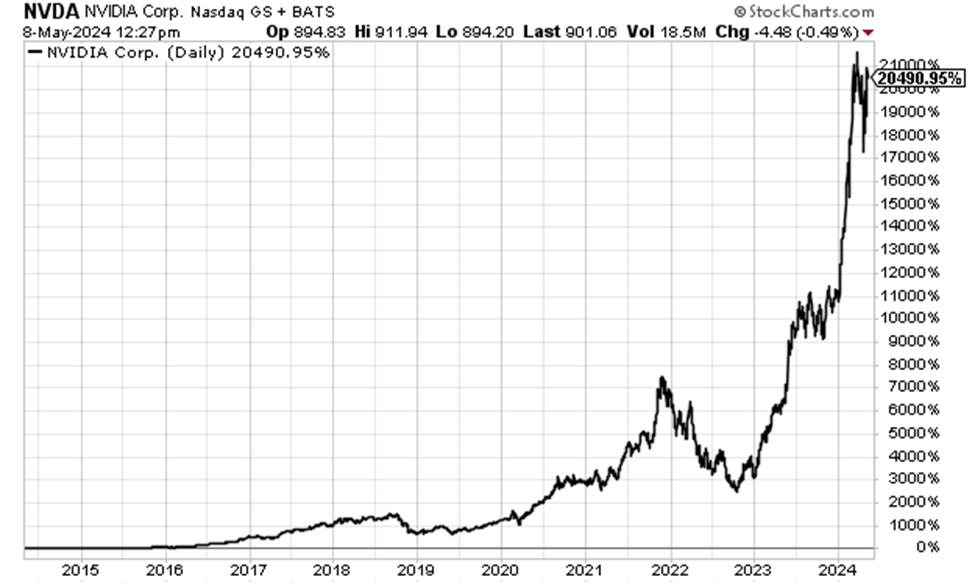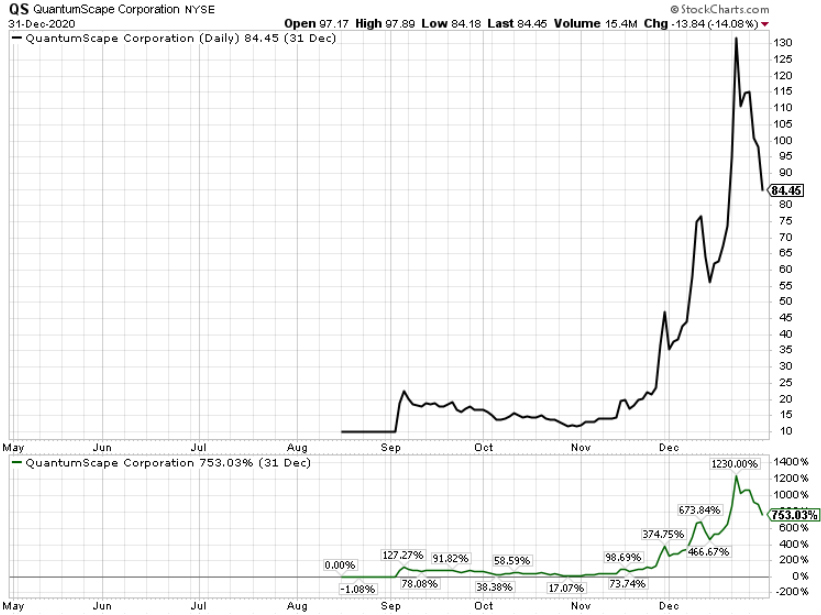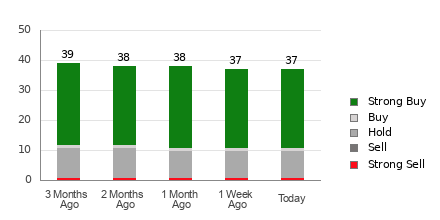The jaw-dropping speed of quantum computing … how to invest today using a portfolio approach … Elon Musk’s latest tech breakthrough … Jonathan Rose’s huge trading event
In 2013, Google Research announced its Quantum AI Lab.
This was Google’s foray into quantum computing, powered by the most advanced quantum computer commercially available at the time, D-Wave Two from D-Wave Systems.
Fast forward to 2015, and a breakthrough from Google. From Wired:
Google has announced that its D-Wave computer has outperformed a traditional desktop by 108 times — making it one hundred million times faster.
“What a D-Wave does in a second would take a conventional computer 10,000 years to do,” said Hartmut Nevan, director of engineering at Google, during a news conference to announce the results.
Over the next several years, we began to see practical applications of quantum computing. Here’s Time from last year:
Quantum’s unique ability to crunch stacks of data is already optimizing the routes of thousands of fuel tankers traversing the globe, helping decide which ICU patients require the most urgent care, and mimicking chemical processes at the atomic level to better design new materials.
It also promises to supercharge artificial intelligence, with the power to better train algorithms that can finally turn driverless cars and drone taxis into a reality.
Quantum AI simulations exhibit a “degree of effectiveness and efficiency that is mind-boggling,” U.S. National Cyber Director Chris Inglis tells TIME.
Quantum computing is going to create a new generation of multi-millionaire investors
In 2022, the global quantum computing market size clocked in at $907 million. The latest research forecasts that the space will explode to more than $6,082 million by 2031. That’s a compound annual growth rate of 37%.
This is one of those opportunities where even a small seed investment can blossom into lifechanging wealth in 5-10 years.
Given this, the list of companies pouring money into quantum computing reads like a “who’s who” of blue-chip tech leaders.
Here’s Forbes:
The benefits of having a single computer that can outperform many supercomputers is so valuable that the scientific community, technology industry, governments, and enterprises are investing billions into the development and use of quantum computing.
This includes industry leaders like Alibaba, Amazon, IBM, Intel, Google, Honeywell, Microsoft, Nvidia, and Toshiba among many other companies.
While any of these companies will likely treat your money well over the next decade, for the biggest returns, investing in these mega-cap companies isn’t your best bet. You want to target smaller companies that have the room to grow into tomorrow’s mega-cap quantum leaders.
As an example, take Nvidia. In May of 2014 – 10 years ago – its market cap was $10.6 billion. That’s not small, but it’s certainly much smaller than today’s market cap of $2.26 trillion.
And what has this market-cap growth meant for Nvidia’s shareholders?
Over this same 10-year period, Nvidia’s stock has exploded 20,491%.

Source: StockCharts.com
A moment ago, I wrote “even a small seed investment can blossom into lifechanging wealth in 5-10 years.” That wasn’t hyperbole.
If you’d invested just $5,000 in Nvidia 10 years ago, you’d now be sitting on $1.02 million. A higher conviction bet of $20,000 would leave you with more than $4 million.
A wise plan would be to spread small amounts of capital over a basket of quantum computing stocks
Expect most of them to do little for you – possibly even go bankrupt. But if you hit that one winner like Nvidia, your overall gain will dwarf your underperformers. This “portfolio approach” model is often used in the venture capital community.
Here are a handful of smaller quantum computing companies as a starting point for your research:
- Rigetti (RGTI) – market cap of $218 million
- Quantum Computing Inc. (QUBT) – market cap of $68 million
- ·Arqit Quantum Inc. (ARQQ) – market cap of $78 million
- D-Wave Quantum (QBTS) – market cap of $215 million
I’ll note that Legendary investor Louis Navellier is wading into this space.
He got his Growth Investor subscribers into Nvidia several years ago (they’re up 2,030% as I write), and he’s now looking to repeat that performance with quantum computing.
From Louis to his subscribers:
We’ve certainly benefited from the rise of Nvidia and AI here in Growth Investor. But I am here to tell you today that you should always keep an eye out for the next technological revolution on the horizon. Because by the time the mainstream public hears about it, the “easy” money will have already been made.
That’s why I predict the next wave of innovation is going to come from quantum computing.
I want to cover more ground in today’s Digest, so we’re going to move on from here. But if you want more about quantum computing, as well as a preview of the under-the-radar company that’s on Louis’ radar, check out this free research video that Louis put together.
While we’re looking into the future of cutting-edge technologies and their impacts on our world and investment markets, next up is “PRIME”
PRIME stands for “Precise Robotically Implanted Brain-Computer Interface.” It comes from Elon Musk’s company Neuralink. To put it simply, PRIME is Musk’s attempt at merging the human brain with artificial intelligence.
For more, let’s go to our macro expert Eric Fry who has put more research into this than any other analyst I’m aware of:
Musk and his team at Neuralink built a unique kind of brain surgeon…
It’s a robot, called the “R1,” that can precisely implant a special device in a region of the brain that controls the intention to move.
Neuralink’s medical device, called the “N1,” has more than 1,000 electrodes attached to 64 threads, which amplifies its brain-reading potential.
Because the N1 threads are thinner than human hairs, they can’t be inserted by hand. But Neuralink’s R1 robot can do the job. It can target specific parts of the brain and insert all 64 threads in only about 15 minutes.
That procedure, hence, is known as PRIME.
Eric goes on to explain that once implanted, these N1 threads interpret a person’s neural activity and make it available for computers. Then, the person can control external devices with nothing but their mind. This is called “electrophysiological recording.”
To be clear, this is not some “way off in the future” breakthrough. It’s already happened.
Back to Eric:
This past January, Musk’s PRIME was put to the test. One of his R1 robots implanted an N1 device in the brain of a quadriplegic.
While The New York Times called this idea “science fantasy,” the thing is… it worked. The patient is already playing chess online with only his mind.
“It has already changed my life,” the patient recently said. “I feel like it’s going to change the world.”
Now, yesterday brought the headline that this implant has experienced problems. From CNBC:
A number of threads have retracted from [the patient’s] brain, Neuralink said in a blog post Wednesday. This meant there were fewer effective electrodes, which inhibited the company’s ability to measure the Link’s speed and accuracy.
Neuralink says the issue poses no risk to the patient’s safety, and they’re working to resolve the issue.
Small hiccups like this are to be expected and don’t detract from the enormity of this technological advancement. If Musk is correct, and his technology continues advancing as hoped, then the coming years will bring unbelievable stories of the paralyzed walking, the blind seeing, and the deaf hearing.
Turning to the investment implications, this opportunity isn’t quite as easy to access. Neuralink is a private company. But given Eric’s research into the space, he’s flagged one well-known tech play that offers some exposure to Neuralink’s growth.
He put the details inside a special report called How to Profit From Elon Musk’s Neuralink.
Now, you could also invest in this overall idea – the synthesis of robotics and healthcare. For that, I’d point you toward Intuitive Surgical (ISRG). It’s the company behind the da Vinci robotic surgical system.
You could also look at a broad ETF like the Global X Robotics and Artificial Intelligence ETF (BOTZ). Its top holdings include Nvidia, Dynatrace, and UiPath among other global robotics leaders.
Whatever approach is right for you, if you’re looking for two “set it and forget” tech plays, check out quantum computing and robotics/healthcare
To be clear, it’s so early for both these tech trends that you’ll need patience. You should also be prepared to stomach some rollercoaster swings in the related stocks.
But each of these technologies stands to transform our world. And history has shown that this type of “before and after” breakthrough can create dynastic wealth for early investors who, through luck or skill, found themselves in tomorrow’s winner.
Give these opportunities a good look today.
Before we sign off, a quick “thank you”
Yesterday, the latest addition to our corporate family, Jonathan Rose, held his Masters in trading Live event. The size of the attendance, plus the feedback we’ve received, has been like nothing we’ve seen here at InvestorPlace in a long, long time. A sincere “thank you” to everyone who attended and made yesterday so special.
This morning, Jonthan sent out the email below to those who attended:
I want to thank you for attending my first-ever Masters in trading Summit yesterday. The response has been incredible.
I truly believe [the market approach we discussed] can help anyone eventually achieve a life of freedom and prosperity, even if they don’t have a lot of time, money, or experience.
Jonathan briefly discussed the trade set-up he gave away for free in yesterday’s event, then pointed toward the next trade that’s coming down the pike:
I’m getting ready to release a brand-new trade recommendation over the next few days, and these recommendations tend to move fast.
Remember, the seven trades I released during my live experiment rose an average of 125%, often within 30 days or less.
If you missed yesterday’s event and want to know more about these two trades, click here to catch the free replay of Masters in trading Live.
And again, “thank you” to everyone who attended. You’re in good hands with Jonathan.
Have a good evening,
Jeff Remsburg









